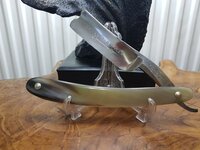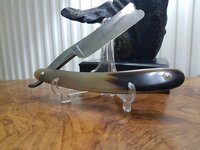I'd only use water on the horn and, personally, I'd only do it with the W/D paper.
You CAN use micromesh wet but I prefer not to.
If you have W/D up to 8000 I probably wouldn't bother with the micromesh at all. It MUST be shining by 8000!
As with a blade you can't make up the heavy lifting that should have been done earlier at the higher grit stage.
You CAN use micromesh wet but I prefer not to.
If you have W/D up to 8000 I probably wouldn't bother with the micromesh at all. It MUST be shining by 8000!
As with a blade you can't make up the heavy lifting that should have been done earlier at the higher grit stage.



